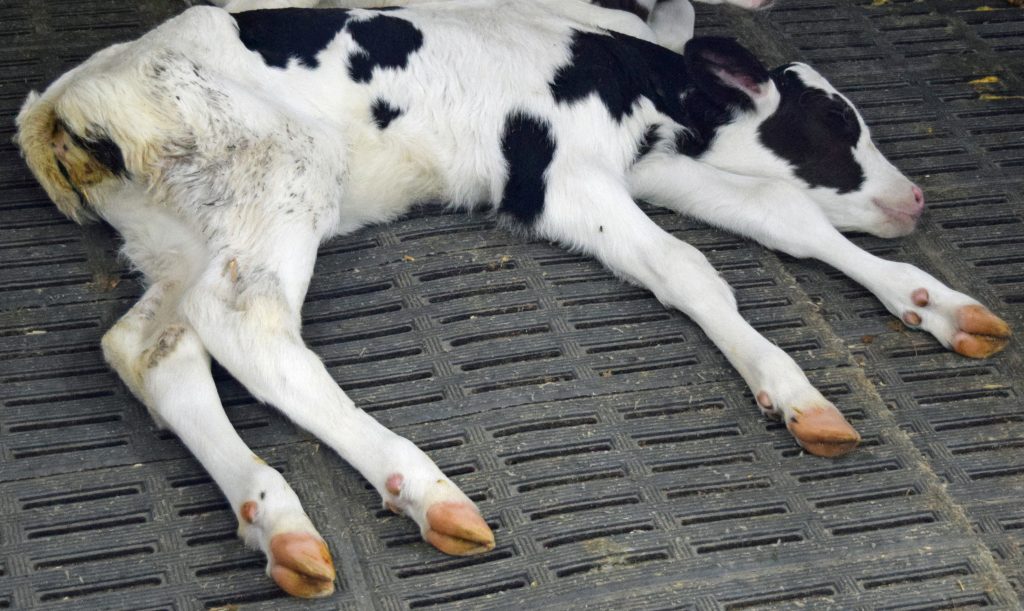Healthy Calf Conference
Follow to stay up-to-date on all Healthy Calf Conference updates. Speaker announcements, sponsorship information, registration announcements, and more.
It’s true that in the veal industry, cattle mortality can be higher than in other bovine sectors. Calves are purchased with an unknown health status and age. They are commingled on trucks with calves from an assortment of farms and brought together to the veal barn. In all likelihood, calves that stay on the farm of origin would not experience the same challenges as calves that are transported and commingled.

With that in mind, what is an acceptable mortality rate on veal farms? When does the red-flag go up that something is not right and mortality is too high? What is the first step in addressing the situation?
The recently updated Code of Practice for the Care and Handling of Veal Cattle (the Code) requires producers to record mortalities, including reason for death or euthanasia, if known. The Code also recommends consulting with your herd veterinarian if average annual mortality exceeds six per cent, for help to investigate the cause, and implement corrective strategies.
If a producer is buying good quality male dairy calves, mortality should be closer to three to four per cent.
It is not uncommon for producers to become barn blind; sometimes people in the veal industry believe it’s normal to have higher mortalities, but that’s not something that should be accepted when there are actions you can take to improve management and have fewer losses. The longer you wait to investigate, the more it will cost you in the long run.
“There are a few different options for producers evaluating mortality,” explains Kendra Keels, Veal Farmers of Ontario Industry Development Director. “Looking at each stage of production separately and calculating mortality for a group will give a good indication of which area may be struggling, versus a whole herd approach. Your veterinarian can advise you on what will work best for your herd,” she says.
Working with a veterinarian is one of the costs of doing business, and you need to have a valid Veterinary-Client-Patient-Relationship (VCPR), which means more than just signing off on prescription medications each year. Your veterinarian knows your herd, and they are an excellent resource to help when things are out of control, mortality being one of them.
Sometimes producers are embarrassed to call a veterinarian because they’re experiencing a high percentage of mortalities. If mortality reaches higher than six per cent, it is critical that a few of those calves be sent to the Animal Health Laboratory for testing. The results will help guide in the decision making, setting up protocols and using the correct drug for the bug.
With livestock there is always the chance of a disease outbreak, and the veal sector is a little higher because of the nature of sourcing male dairy calves. It is important to your health and the health of your family to get a diagnosis as soon as possible because of the potential for the cause to be zoonotic (contagious to humans). One zoonotic disease that has been spreading significantly in Ontario is Salmonella Dublin (S. Dublin).
In the case of S. Dublin, it is resistant to most antibiotics so you could be treating for no reason because the drug simply does not work. As producers you have seen a lot and know a lot, but testing sometimes is the best way to get the right answers not only saving you money and reducing antibiotic use, but reducing the risk to the health of you and your family, especially young children.
Knowledge is power and knowing what you are dealing with and if you are treating the disease appropriately are worth the investment to ensure accurate diagnosis. Veterinarians are your best source of up to date information, protocols and testing. If you are not recording mortalities and do not know the herd average, now is the time to begin recording. Remember, you can’t manage what you don’t measure.
Follow to stay up-to-date on all Healthy Calf Conference updates. Speaker announcements, sponsorship information, registration announcements, and more.
The Codes of Practice are nationally developed guidelines for the care and handling of farm animals. They serve as our national understanding of animal care requirements and recommended practices.